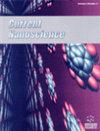用于癌症靶向的吡啶嘧啶类和硒纳米粒子药物的生化和临床前评估、合成和对接研究
IF 1.5
4区 材料科学
Q4 BIOTECHNOLOGY & APPLIED MICROBIOLOGY
引用次数: 0
摘要
:空间光调制器的编码方法是空间光场调制技术的核心关键,在特定的模式和应用要求下,对调制算法的需求也不尽相同。本文首先回顾了近年来在数字微镜器件(DMD)和液晶空间光调制器(LC-SLM)的光场控制算法方面取得的进展。在现有算法的基础上,分析了优化方法的影响。然后,总结了不同算法的应用领域,并分析了控制算法的特点。此外,本综述还重点介绍了利用各种编码方案和空间光调制器(SLM)操纵光场所取得的创新性突破。最后,概述了新兴控制算法技术未来面临的关键挑战,并提出了开发 SLM 控制算法的前景。本文章由计算机程序翻译,如有差异,请以英文原文为准。
Biochemical and Preclinical Evaluation with Synthesis and Docking Study of Pyridopyrimidines and Selenium Nanoparticle Drugs for Cancer Targeting
: The coding method of spatial light modulator is the core key of spatial light field modulation technology, and the needs of the modulation algorithm are different under the specified mode and application requirements. This paper first reviews the progress made in recent years in light field control algorithms for digital micromirror devices (DMDs) and liquid crystal spatial light modulators (LC-SLM). Based on existing algorithms, the impact of optimization methods is analyzed. Then, the application areas of the different algorithms are summarized, and the characteristics of the control algorithms are analyzed. In addition, this review highlights innovative breakthroughs achieved by using various coding schemes and spatial light modulators (SLM) to manipulate the light field. Finally, critical future challenges facing emerging control algorithm technologies are outlined, while prospects for developing SLM control algorithms are proposed.
求助全文
通过发布文献求助,成功后即可免费获取论文全文。
去求助
来源期刊

Current Nanoscience
工程技术-材料科学:综合
CiteScore
3.50
自引率
6.70%
发文量
83
审稿时长
4.4 months
期刊介绍:
Current Nanoscience publishes (a) Authoritative/Mini Reviews, and (b) Original Research and Highlights written by experts covering the most recent advances in nanoscience and nanotechnology. All aspects of the field are represented including nano-structures, nano-bubbles, nano-droplets and nanofluids. Applications of nanoscience in physics, material science, chemistry, synthesis, environmental science, electronics, biomedical nanotechnology, biomedical engineering, biotechnology, medicine and pharmaceuticals are also covered. The journal is essential to all researches involved in nanoscience and its applied and fundamental areas of science, chemistry, physics, material science, engineering and medicine.
Current Nanoscience also welcomes submissions on the following topics of Nanoscience and Nanotechnology:
Nanoelectronics and photonics
Advanced Nanomaterials
Nanofabrication and measurement
Nanobiotechnology and nanomedicine
Nanotechnology for energy
Sensors and actuator
Computational nanoscience and technology.
 求助内容:
求助内容: 应助结果提醒方式:
应助结果提醒方式:


